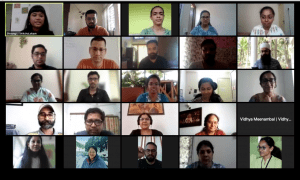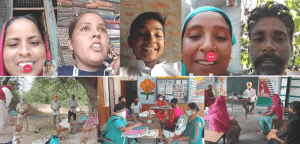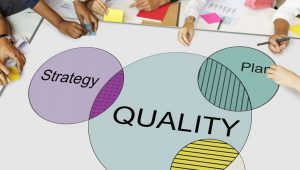Voices of Cerebration: Exploring Interactions in the System
“The action is in the interaction” -Douglas Conant
Interactions that we come across in our day-to-day lives form the core of our learnings and understandings. In the context of education, multiple interactions between children, parents, educators, state officials and many more stakeholders are responsible for producing the result that we see today. For changemakers, interactions with stakeholders form an integral part of understanding context, designing relevant programs and improving the effectiveness of these programs. Interactions fill us with wisdom and therefore, they are essential in fuelling actions that lead to solutions for complex societal problems. Understanding the role of interactions in depth thus becomes important in our journey of problem-solving.
However, most often, these interactions are difficult to make sense primarily due to the absence of linearity in them. The school education system in itself has multiple actors at different levels and when these actors begin interacting with each other, we see the emergence of an intensive web that contains many simultaneous, parallel and dependent interactions. For example, a Cluster Resource Person might be interacting with many Headmasters under them and the number of interactions keeps getting multiplied as more actors like Block Resource Persons, Block Education Officers etc. come into the picture.
In Week 3 of the Cerebration Series, ShikshaLokam along with the participants from different organizations came together to understand the role of interactions in the context of the different actors that we work with as well as in the context of their lived realities. We all learnt a new approach towards unravelling complex interactions that we work in and share key experiences with the group to learn from each other not only from where we stand as change catalysts but from the perspective of the stakeholders themselves.
Stories of ‘Memorable Interaction’
The session started with participants sharing a memorable interaction that they most recently had with a stakeholder. They further shared what made the interaction memorable for them – the particular actions that the stakeholder did that made the interaction memorable for them.
The participants recollected their memories of interactions which included instances of working alongside a visionary education department stakeholder, witnessing supportive stakeholders that enabled growth in their team members and more, and many more. During this engagement, a realisation that emerged was that identifying the instance of interaction, in the form of an activity was quite easy, however there was some struggle in defining what the “interaction” was around the activity.

Memorable Interactions with stakeholders (1)

Memorable Interactions with stakeholders (2)
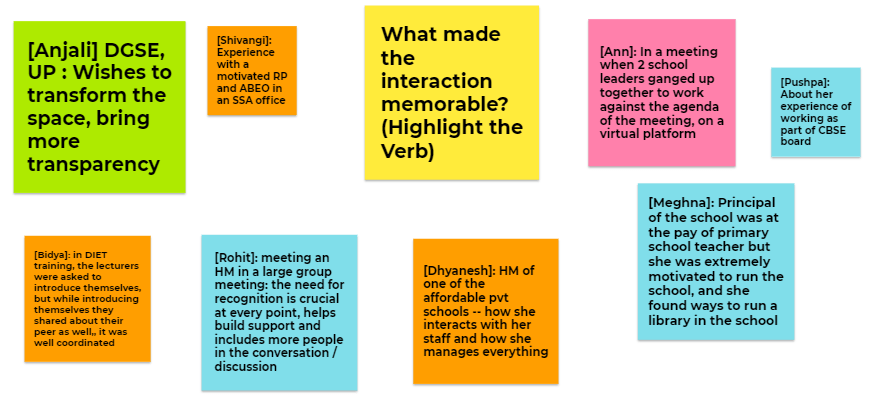
Memorable Interactions with stakeholders (3)
Catalysing Interactions: Network Mapping Approach
It is our interactions with others that lead us to outcomes every day. In the context of the education sector, the interactions that occur between diverse stakeholders: students, parents, teachers, HMs, state officials and so forth are the interactions that eventually lead to student outcomes. In order to bring forth systemic improvements, it becomes necessary to familiarize ourselves with what these interactions within the system are. To practice the approach of understanding these ‘actors’ and ‘actions’ in the system, our participants engaged in a ‘Design Challenge’ wherein they took on the role of NGO actors and identified the networks that emerge in a state-run school leadership development program (SLDP). The exercise primarily revolved around participants attempting to answer the following prompts:
- Who are the stakeholders that we want to work with?
- What are the enabling interactions between them?
Throughout this, the participants focused on identifying interactions relevant to their program while also identifying the aspirational interactions important in running the program at scale.
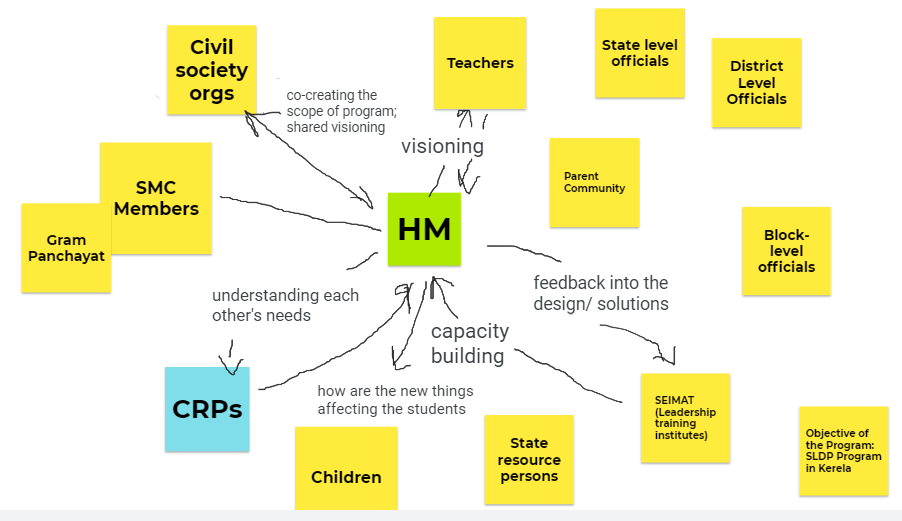
Network Mapping approach in action: participants identify desirous interaction within the system
Key reflections
The key to reaching an aspirational or desired interaction between stakeholders lie in identifying what changes can make the interactions between them more empathetic and enabling – these can be changes in dynamics of the interactions, identifying what barriers need to be overcome and the innovations that can be introduced. Co-creating the outlook and building a shared vision can prove to be instrumental in laying down foundations for desirous interactions. When it comes to identifying means that strengthen an interaction, one must be conscious of introducing means that add value for all actors involved in this interaction during the course of strengthening.
Along with interaction among diverse actors, there are also numerous kinds of interactions that tend to occur namely – interactions around capacity building, sharing of resources, data analysis and reporting that often add to the complexity of interactions within the system. Interactions are dynamic and can quickly change based on the decisions happening on the nodes (actors).
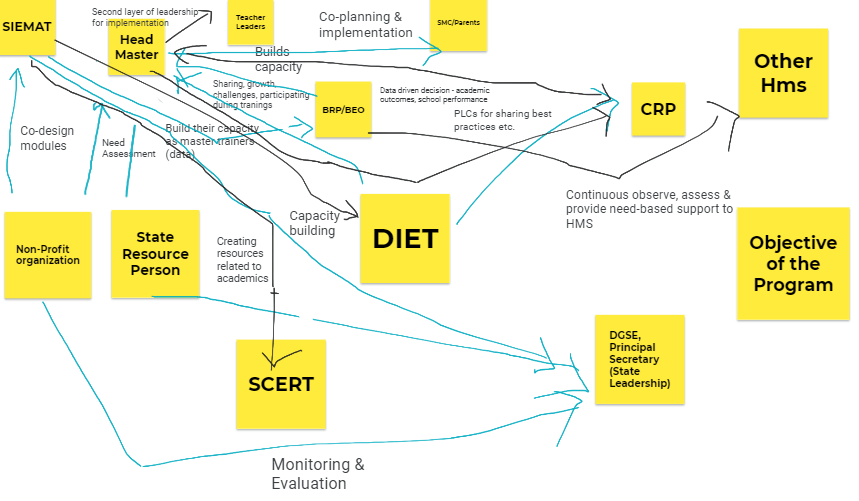
Actors and Interactions (1)

Actors and Interactions (2)
As the session concluded, the discussion served as an important reminder that the onus of restoring agency and designing programs such that agency is restored, at scale, does not solely depend on one single entity or an actor but numerous interactions that occur between several stakeholders on different occasions and on designing interactions in a way that agency of the stakeholders is always restored and not taken away from them. Therefore, paying close attention to existing interactions in our programs becomes vital for its scale and sustenance, so that we can design for generating value in the existing ones and to be able to design newer better interactions.
Have you engaged in or witnessed any interaction that was memorable for you? What value do you see interactions adding to your stakeholders? What has been your approach so far towards familiarizing yourself with numerous interactions in the system? Share with us!
Tags


